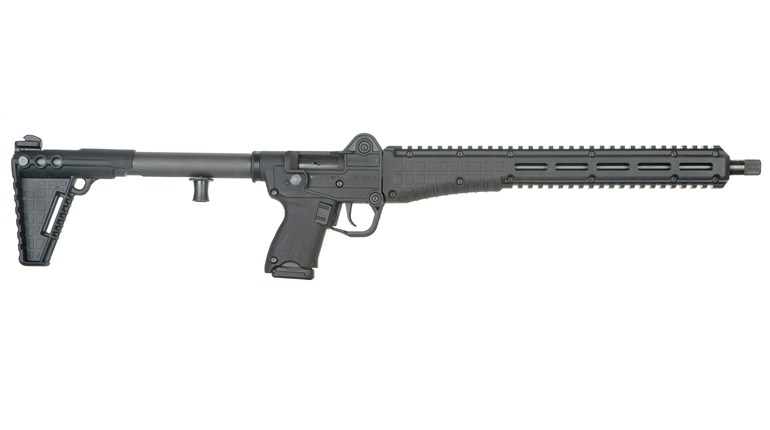
We’ve been looking for that magic bullet for a long time. Of course, magic bullets don’t exist, but the quest for them has given us some amazing ammunition. A recent contender is a bullet that’s injection-molded from a combination of polymer and copper particles. These extremely light projectiles can be launched fantastically fast, and their terminal-performance profile is a bit different from conventional expanding bullets. The latest ammunition company to get on this fast-moving train is NOVX.
Looking to provide the most-innovative, powerful, effective and deadly bullet ever made for military and police, NOVX ammunition combines Inceptor poly/copper matrix projectiles, with the innovative SST stainless steel/NAS3 shell casing. Inceptor bullets have been around since 2014. If nothing else, they are pioneering and unique, but I’m not sure they’ve earned the title of deadliest bullet ever. The company claims ARX bullets will penetrate heavy clothing and still track straight until encountering soft tissue. Then, through the Venturi Effect, the specially designed grooves in the nose of the bullet are supposed to harness the soft tissue and constrict, pressurize and eject it—at supersonic speeds—causing massive tissue damage. Additionally, as the bullet penetrates it’s supposed to tumble in a controlled, predictable fashion, delivering consistent terminal performance, rivaling that of conventional hollowpoints. Sounds groovy doesn’t it?
The terminal-performance testing conducted with ARX bullets confirmed their ability to defeat heavy clothing and push on straight to reach soft tissue. However, beyond that I was a bit underwhelmed. Not so much from the results, but as to how the results compared to the marketing hype. Indeed, damage to the gel blocks was more than what some expanding bullets can provide, but it was also less than others. And, while the company claims the tumbling is “controlled,” it was not necessarily in a straight line. Yes, I think the ARX bullet can be an effective self-defense bullet, but in a science that admittedly splits hairs, I’d classify it as better than some and not as good as others.
As for the NAS3 casings, my work with the NOVX ammunition was my first exposure to this “brass.” Actually, it’s not brass at all. These cases are 50 percent lighter than brass, and according to the manufacturer, twice as strong. It is certainly a unique design, constructed with a nickel-plated, aircraft-grade aluminum base and a nickel-alloy stainless cylinder. The cases also come with flash holes larger than found in conventional brass and they’re self-lubricating and corrosion resistant. They are also magnetic—what a marvelous idea—which makes for easy pickup inside and out.
Here’s an interesting factoid: A single round of NOVX 9 mm ammunition (with a 65-grain projectile) weighs 106 grains. A single round of conventional 124-grain 9 mm ammunition weighs 188 grains. This fact might not seem terrifically important, but a handgun loaded with 15 rounds of NOVX ammo will weigh near 2 ounces less than one loaded with conventional ammunition. More significantly, someone operating remotely as a soldier or in a survival situation and carrying 3 pounds of ammunition could carry 68 (45 percent more) additional rounds of NOVX ammunition. That’s a substantial difference, indeed.
The folks at NOVX provided six boxes (156 rounds—26 per box) of its 9 mm ammo loaded with the 65-grain ARX bullet. On the box the load was listed at 1,575 fps. The NOVX website lists the load at 1,672 fps. I was also provided a single box (51 rounds) of the 9 mm 65-grain RNP—cross training/competition—load, at a listed velocity of 1,550 fps (box) and 1,600 fps (website). NOVX ammo comes with an extra round in each box.
I wanted to see if this new ammunition was reliable, accurate and lived up to the velocity claims. Both loads were tested in three different handguns; first, by firing 10 shots through a Caldwell G2 chronograph, and second by firing five-shot groups at 25 yards from a sandbag rest. The remaining rounds were burned up in all three guns while pulling the trigger as fast as I could.
I had two stoppages. One fired case failed to eject from the R51 and one round failed to fully chamber in the Hi Power. With regard to the round that failed to eject, I dropped the magazine (clearing the double feed), racked the slide and it popped right out. The cartridge that failed to chamber was placed back into the magazine and it functioned perfectly the second time around.
As far as velocity goes, the ammo exceeded my expectations, delivering better than advertised—on the box—velocities out of 4-inch or longer barrels. Velocity consistency was on par with what you’d expect from ammo fired from these pistols, and the accuracy/precision was excellent. For 12, five-shot groups, from three different handguns, fired at 25 yards, the average group size was 2.54 inches. Incidentally, the point-of-impact for the RNP and ARX loads was identical from all three pistols.

As far as the unique NAS3 case, I’m intrigued; but I should fire more than 207 rounds and then reload several hundred cases—several times—before passing judgment. Cost wise, the ARX load will run you about $1 per shot and the RNP about half that. That’s a bit more than you’ll pay for conventional self-defense or practice ammunition. One thing to keep in mind, however, is that both the ARX and RNP bullets are significantly safer on steel targets.
While I’m a bit skeptical, you might feel the ARX is a tad closer to that magic bullet we’ve been seeking for so long. Inceptor and NOVX seemed convinced it is.



































